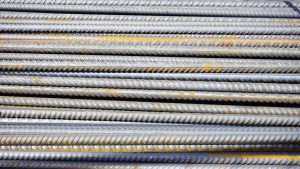Al Jaugelis of RDH Building Engineering was the final speaker at the CSC Vancouver Construction Fair, held at the Vancouver Convention Centre (East) on November 20.His topic was specifying fenestration products with NAFS under the BCBC.
Al Jaugelis of RDH Building Engineering was the final speaker at the CSC Vancouver Construction Fair, held at the Vancouver Convention Centre (East) on November 20. His topic was specifying fenestration products with NAFS under the BCBC.
Jaugelis spoke on behalf of the Fenestration Association of B.C., and began by explaining that what’s different about North American Fenestration Standard (NAFS) is that is changes how we specify fenestration.
NAFS is a new requirement in the 2012 BC Building Code, and in BC the challenge is how to integrate it into current practice, such as letters of assurance.
New fenestration attributes that need to now be specified include performance class, performance grade, water penetration test pressure and infiltration/exfiltration level.
NAFS is a new, comprehensive standard that addresses performance and quality requirements of windows, doors and skylights, Jaugelis said.
NAFS harmonizes Canadian and American fenestration standards, and this is called the Harmonized Standard in the building code, and NAFS-08 by the fenestration industry.
Windows, doors and skylights have to conform to performance grades when tested in accordance with the harmonized standard, according to the BC building code.
NAFS tests ease of operation, air tightness, water tightness, wind load resistance, forced entry resistance, and durability.
NAFS harmonizes Canadian and US standards, but needs to be used with Canadian Supplement in Canada. Not every area could be harmonized. Some Canadian standards were higher than those in the U.S., and the standards weren’t “watered down,” Jaugelis said.
U.S. tested products have to be re-tested and re-labeled to show they comply with Canadian standards.
Jaugelis said B.C. is the first province to try to apply NAFS standards to doors. Code implementation has been delayed to give industry more time to prepare, he said.
NAFS excludes itself from interior fenestration products, garage doors, curtain wall and storefront, and other products.
New concepts in NAFS include performance class, which is four categories for measuring durability.
Performance class is concerned with more than size and pressure, Jaugelis said. There are auxiliary tests that get run on products to test for stresses.
Performance Class implies that products sold and labeled as belonging to a performance class must be identical in every respect (but glass) to the test specimen that achieved the Class designation.
Products can therefore have more reinforcing and hardware than is needed for design loads, Jaugelis said.
Another new concept in NAFS is gateway requirements, a set of minimum standards to be part of a performance class.
JOC DIGITAL MEDIA










Recent Comments
comments for this post are closed